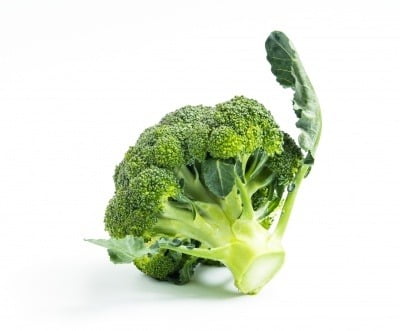
Raw greens might not be the easiest vegetables to digest but they have some great benefits, not least their anti-cancer potential. Over many years, a number of studies have been conducted to compare cooking or processing of green foods with the raw form to see how much nutritive value is loss. We look at the sulforaphanes
One of the most useful agents in greens vegetables especially the Brassicas such as broccoli, cabbage and Brussel sprouts is sulforaphane. This agent (4-methylsulphinylbutyl isothiocyanate) is a naturally occurring sulphur containing compound with potent antioxidant and this potential anti-cancer activity. Its highest concentration is in broccoli where it can be as high as 280 mg/100g dry weight (Zhang et al., 1992). Normally, in the vegetable it is bound to a sugar group called a glucosinolate with the name in this case of glucoraphanin. When vegetables are processed or eaten, an enzyme called myrosinase releases the sulforaphane which then begins to function in the body.
Interest in sulforaphane began when early studies showed that it induced a detoxifying enzyme called quinine reductase which forms part of the phase II detoxification system. In animal studies, it was shown that administration of sulforaphane prevented demethylbenz-(a) induced tumours. It also causes cancer cells to die directly (or apoptosis) (Gingras et al., 2004) probably by inducing a block in the cell cycle, but the real interest has come in human volunteer studies especially in cancer prevention.
An important study by the Dutch organisation TNO looked at the bioavailability of sulforaphane in eight volunteer men who consumed 200g of either crushed raw broccoli or its cooked form with a meal (Vermeulen et al., 2008). The study reinforced the view that eating the raw form was more beneficial than a processed form because the critical agent sulforaphane was not formed properly. A nitrile appears to be generated instead on cooking which does not have the benefits and studies on why processing affects quality are also being extensively made (Wang et al., 2012).
References
Gingras, D., Gendron, M., Boivin, D., Moghrabi, A., Théorêt, Y., Béliveau, R. (2004) Induction of medulloblastoma cell apoptosis by sulforaphane, a dietary anticarcinogen from Brassica vegetables. Cancer Lett. 203, pp. 35−43
Vermeulen, M.; Klöpping-Ketelaars, I. W. A. A.; Van Den Berg, R.; Vaes, W. H. J.Bioavailability and kinetics of sulforaphane in humans after consumption of cooked versus raw broccoli J. Agric. Food Chem. 2008, 56, 10505– 10509
Wang, G.C., Farnham, M., Jeffery, E.H. (2012) Impact of Thermal Processing on Sulforaphane Yield from Broccoli (Brassica oleracea L. ssp. italica). J. Agric. Food Chem., 60(27) pp. 6743-6748
Zhang, Y., Kensler, T. W., Cho, C., Posner, G. H., Talalay. P. (1994) Anticarcinogenic activities of sulforaphane and structurally related synthetic norbornyl isothiocyanates. Proc. Natl. Acad. Sci. U.S.A. 91, pp. 3147−3150
Zhang, Y., Talalay, P., Cho, C. G., Posner, G. H. (1992) A major inducer of anticarcinogenic protective enzymes from broccoli: Isolation and elucidation of structure. Proc. Natl. Acad. Sci. U.S.A. 89,pp. 2399−2403.
Leave a Reply